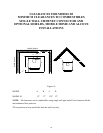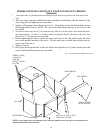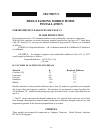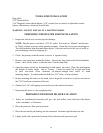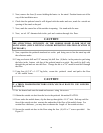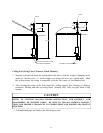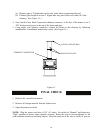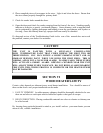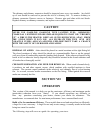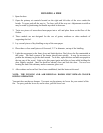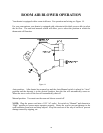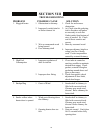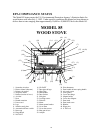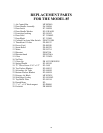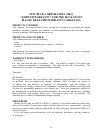
The chimney and chimney connector should be inspected once every two months. Any build-
up of soot should be removed to prevent the risk of a chimney fire. To remove chimney or
chimney connector: Remove screws or fasteners. Remove pipe and clean with steel brush.
Replace chimney or chimney connector, and replace screws and/or fasteners.
CAUTION
NEVER USE GASOLINE, GASOLINE TYPE LANTERN FUEL, KEROSENE,
CHARCOAL LIGHTER FLUID OR SIMILAR LIQUIDS TO START OR "FRESHEN
UP" A FIRE IN THE HEATER. KEEP ALL SUCH LIQUIDS WELL AWAY FROM
THE STOVE WHEN IT IS IN USE. ALL FLUIDS OF THIS TYPE GIVE OFF
VOLATILE FUMES AND CAN AND WILL EXPLODE!! DON'T TAKE A CHANCE
WITH THE SAFETY OF YOUR HOME AND FAMILY.
DISPOSAL OF ASHES: Ashes should be placed in a metal container with a tight fitting lid.
The closed container of ashes should be placed on a noncombustible floor or on the ground,
well away from all combustible materials pending final disposal. If the ashes are disposed of by
burial in soil or otherwise locally dispersed, they should be retained in the closed container until
all cinders have thoroughly cooled.
CREOSOTE-FORMATION AND NEED FOR REMOVAL: When wood is burned slowly,
it produces tar and other organic vapors, which combine with expelled moisture to form
creosote. The creosote vapors condense in the relatively cool chimney flue of a slow-burning
fire. As a result, creosote residue accumulates on the flue lining. When ignited this creosote
makes an extremely hot fire.
SECTION VII
OPERATION
This section of the manual is to help you get the maximum efficiency and maximum smoke
(particulate) reduction from your heater. If you should experience any difficulty or
have any questions concerning your heater, contact your dealer for assistance. The
manufacturer recommends that for maximum performance burn seasoned hard wood.
Build a fire for maximum efficiency. These models burn wood and extract heat so efficiently,
a large fire is not necessary. A large fire not only wastes energy, it usually results in the home
being too warm for comfort.
The following steps will serve as a guide for operating your stove.
30



